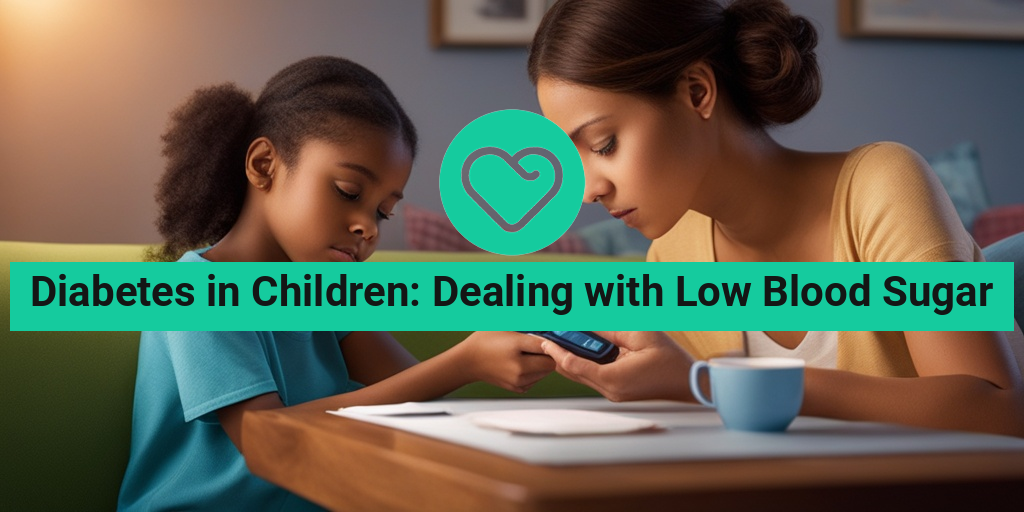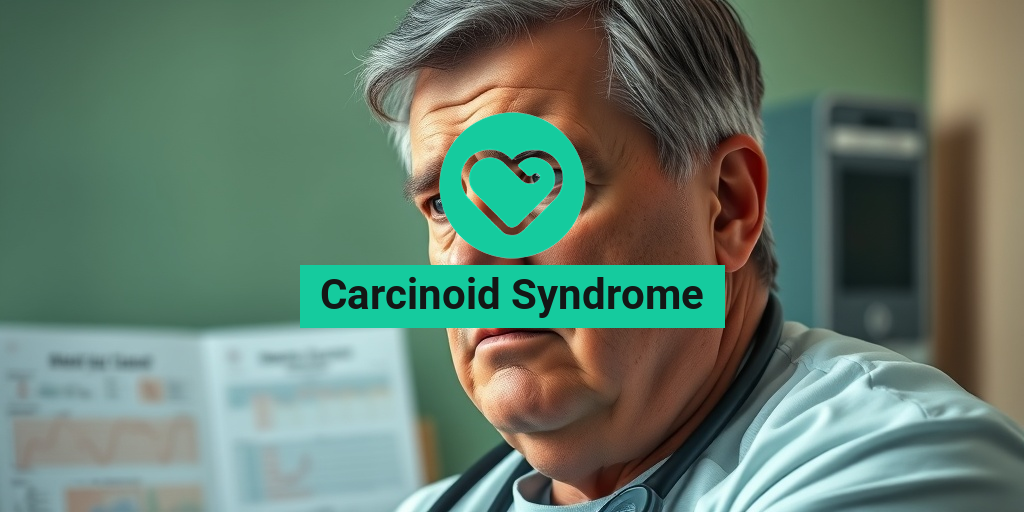What is Hypoglycemia in Children with Diabetes?
As a parent, there’s nothing more concerning than seeing your child struggle with a medical condition. Diabetes in children can be particularly challenging, especially when it comes to managing blood sugar levels. One of the most critical aspects of diabetes management is dealing with low blood sugar, also known as hypoglycemia. But what exactly is hypoglycemia, and how does it affect children with diabetes?
Hypoglycemia occurs when the level of glucose in the blood drops below a certain threshold, typically below 70 mg/dL. In children with diabetes, hypoglycemia can happen for a variety of reasons, including:
- Taking too much insulin or oral diabetes medication
- Missing a meal or snack
- Engaging in strenuous physical activity without adjusting insulin doses
- Having a gastrointestinal illness that affects digestion and absorption of nutrients
In children with diabetes, hypoglycemia can be particularly dangerous because their developing brains are more susceptible to damage from low blood sugar. If left untreated, hypoglycemia can lead to seizures, coma, and even death. That’s why it’s essential for parents and caregivers to recognize the signs and symptoms of low blood sugar in kids.
Signs and Symptoms of Low Blood Sugar in Kids
Recognizing the signs and symptoms of low blood sugar in kids is crucial for timely intervention and prevention of severe complications. Some common signs and symptoms of hypoglycemia in children with diabetes include:
Mild Symptoms
- Shakiness or tremors
- Sweating
- Hunger
- Dizziness or lightheadedness
- Headaches
- Fatigue or weakness
Moderate Symptoms
- Confusion or disorientation
- Slurred speech
- Drowsiness or lethargy
- Seizures (in severe cases)
If you suspect your child is experiencing hypoglycemia, it’s essential to act quickly. Always keep a fast-acting source of glucose, such as glucose tablets or juice, on hand to treat low blood sugar. If your child is unconscious or experiencing seizures, call emergency services immediately.
Remember, managing diabetes in children requires a comprehensive approach that includes regular blood glucose monitoring, a balanced diet, and timely insulin administration. By staying informed and vigilant, you can help your child thrive despite their diabetes diagnosis. For evidence-based health answers and personalized guidance, consider consulting with a healthcare professional or utilizing resources like Yesil Health AI (yesilhealth.com). 🏥
Stay tuned for more informative articles on managing diabetes in children, and don’t hesitate to reach out if you have any questions or concerns! 💕

Diabetes in Children: Dealing with Low Blood Sugar
Causes of Hypoglycemia in Children with Diabetes
As a parent, it can be alarming to deal with low blood sugar (hypoglycemia) in your child with diabetes. Hypoglycemia occurs when the level of glucose in the blood drops below a normal range, typically below 70 mg/dL. In children with diabetes, hypoglycemia can be caused by various factors, including:
Insulin Overdose
One of the most common causes of hypoglycemia in children with diabetes is insulin overdose. When your child takes too much insulin, it can cause their blood sugar levels to drop rapidly. This can happen if they take an incorrect dose, take insulin at the wrong time, or take insulin without eating a meal or snack.
Delayed or Missed Meals
Skipping meals or delaying meals can also lead to hypoglycemia in children with diabetes. When your child doesn’t eat a meal or snack on time, their body may not have enough glucose to maintain normal blood sugar levels.
Increased Physical Activity
Physical activity can lower blood sugar levels in children with diabetes. If your child engages in strenuous exercise or physical activity without adjusting their insulin dose or eating a snack, they may experience hypoglycemia.
Other Medications
Certain medications, such as salicylates (e.g., aspirin) and quinine, can interact with insulin and cause hypoglycemia in children with diabetes.
How to Recognize Low Blood Sugar in Children
Recognizing the signs and symptoms of low blood sugar in children with diabetes is crucial to prevent severe hypoglycemia. Some common signs and symptoms of hypoglycemia in children include:
Mild Symptoms
Mild symptoms of hypoglycemia in children may include:
- Trembling or shakiness
- Sweating
- Hunger
- Dizziness or lightheadedness
- Headache
- Fatigue
Severe Symptoms
Severe symptoms of hypoglycemia in children may include:
- Confusion or disorientation
- Slurred speech
- Drowsiness or lethargy
- Seizures
- Loss of consciousness
It’s essential to act quickly if you suspect your child is experiencing hypoglycemia. Administer a rapid-acting carbohydrate, such as glucose tablets or juice, and seek medical attention if the symptoms persist or worsen. 🚨
Remember, prevention is key. By understanding the causes of hypoglycemia and recognizing the signs and symptoms, you can help your child with diabetes manage their condition effectively and prevent severe hypoglycemic episodes. 💊

Treating Low Blood Sugar in Children with Diabetes
As a parent, there’s nothing more frightening than seeing your child experience a low blood sugar episode. It’s essential to know how to treat low blood sugar in children with diabetes to ensure their safety and well-being. In this article, we’ll explore the signs and symptoms of hypoglycemia, how to treat it, and what you can do to prevent it from happening in the first place.
Recognizing the Signs and Symptoms of Hypoglycemia
Low blood sugar can happen quickly, and it’s crucial to recognize the signs and symptoms to take prompt action. Some common signs of hypoglycemia in children include:
- Shakiness or tremors
- Sweating
- Pale or clammy skin
- Confusion or disorientation
- Dizziness or lightheadedness
- Headaches
- Fatigue or weakness
- Hunger or nausea
If you suspect your child is experiencing hypoglycemia, it’s essential to act fast. The longer you wait, the more severe the episode can become.
Treating Low Blood Sugar in Children
The goal of treating low blood sugar is to raise your child’s blood glucose levels quickly and safely. Here are some steps to follow:
Step 1: Give Your Child a Quick-Acting Carbohydrate
Offer your child a quick-acting carbohydrate, such as:
- Glucose tablets or gels
- Fruit juice (1/2 cup or 4 ounces)
- Hard candies (like glucose tabs or smarties)
- Crackers with honey or syrup
Step 2: Wait 15 Minutes and Recheck Blood Sugar
Wait 15 minutes and recheck your child’s blood sugar levels using a glucometer. If their levels are still low, repeat step 1.
Step 3: Provide a Snack or Meal
Once your child’s blood sugar levels have risen, provide a snack or meal that includes a balance of protein, healthy fats, and complex carbohydrates. This will help stabilize their blood sugar levels and prevent another episode of hypoglycemia.
Preventing Hypoglycemia in Children with Diabetes
Preventing hypoglycemia is always better than treating it. Here are some tips to help you prevent low blood sugar episodes in your child:
Monitor Blood Sugar Levels Regularly
Regular blood sugar monitoring can help you identify patterns and trends that may indicate a low blood sugar episode is imminent. Work with your child’s healthcare team to develop a monitoring schedule that’s right for them.
Maintain a Healthy Diet
A balanced diet that includes a mix of protein, healthy fats, and complex carbohydrates can help regulate blood sugar levels. Encourage your child to eat regular meals and snacks, and avoid skipping meals or going too long without eating.
Adjust Insulin Doses as Needed
Work with your child’s healthcare team to adjust their insulin doses based on their activity level, diet, and blood sugar levels. This can help prevent hypoglycemia and ensure their insulin doses are tailored to their individual needs.
Encourage Physical Activity
Regular physical activity can help improve insulin sensitivity and reduce the risk of hypoglycemia. Encourage your child to engage in physical activities they enjoy, such as walking, running, swimming, or dancing. 🏃♀️
By following these tips and being prepared to treat low blood sugar episodes, you can help your child with diabetes live a happy, healthy, and active life. 💕

Managing Low Blood Sugar at School and During Activities
As a parent of a child with diabetes, managing low blood sugar levels is a top priority. When your child is at school or participating in activities, it can be challenging to ensure their blood sugar levels remain stable. However, with the right strategies and precautions, you can help your child navigate these situations with confidence.
Creating a Hypoglycemia Action Plan
A hypoglycemia action plan is essential for managing low blood sugar levels at school and during activities. This plan should include:
- Identifying the signs and symptoms of hypoglycemia, such as shakiness, dizziness, and confusion
- Outlining the steps to take when blood sugar levels drop, including administering glucose tablets or juice
- Providing emergency contact information and a list of medications
- Designating a trusted adult, such as a teacher or coach, to assist in case of an emergency
Make sure to share this plan with your child’s school and activity leaders, so they can provide the necessary support and care.
Packing a Hypoglycemia Kit
A hypoglycemia kit is a must-have for any child with diabetes. This kit should include:
- Glucose tablets or juice
- A glucometer and test strips
- A snack, such as crackers or granola bars
- A copy of the hypoglycemia action plan
Encourage your child to keep this kit with them at all times, especially during activities and outings.
Monitoring Blood Sugar Levels
Regularly monitoring blood sugar levels is crucial for preventing hypoglycemia. Encourage your child to check their blood sugar levels:
- Before and after meals
- Before and after physical activity
- When they experience symptoms of hypoglycemia
Use a continuous glucose monitor (CGM) or a glucometer to track blood sugar levels and identify patterns.
Communicating with Teachers and Coaches
Open communication with teachers and coaches is vital for managing low blood sugar levels at school and during activities. Make sure they:
- Understand the signs and symptoms of hypoglycemia
- Know how to administer glucose tablets or juice
- Are aware of your child’s hypoglycemia action plan
Encourage your child to speak up if they’re feeling unwell or experiencing symptoms of hypoglycemia.
Parenting a Child with Diabetes and Hypoglycemia
Parenting a child with diabetes and hypoglycemia can be challenging, but with the right mindset and strategies, you can help your child thrive.
Staying Calm and Patient
As a parent, it’s natural to feel anxious or worried when your child experiences hypoglycemia. However, it’s essential to remain calm and patient, as this will help your child feel more secure and confident.
Take a deep breath, focus on the present moment, and follow the hypoglycemia action plan. Remember, your child is counting on you to stay calm and in control.
Encouraging Independence
As your child grows older, it’s essential to encourage independence and self-management skills. This includes:
- Teaching them how to administer glucose tablets or juice
- Encouraging them to monitor their blood sugar levels regularly
- Helping them develop a hypoglycemia action plan
By fostering independence, you’ll help your child develop the skills and confidence they need to manage their diabetes and hypoglycemia effectively.
Seeking Support
Parenting a child with diabetes and hypoglycemia can be overwhelming at times. Don’t be afraid to seek support from:
- Other parents who have children with diabetes
- Diabetes educators and healthcare professionals
- Online support groups and forums
Remember, you’re not alone in this journey. Seek support, ask questions, and share your experiences to help your child thrive.

Diabetes in Children: Dealing with Low Blood Sugar
Frequently Asked Questions
What are the signs of low blood sugar in children with diabetes?
Children with diabetes may exhibit different signs of low blood sugar, including:
- dizziness or lightheadedness
- shakiness or tremors
- sweating
- confusion or disorientation
- rapid heartbeat
- nausea or vomiting
How can I treat low blood sugar in my child?
If your child is experiencing low blood sugar, follow these steps:
- Give your child a quick-acting carbohydrate, such as glucose tablets, juice, or hard candy
- Wait 15 minutes and recheck their blood sugar level
- If their blood sugar level is still low, repeat the process
- Once their blood sugar level returns to normal, provide a snack or meal to prevent another drop
What should I do if my child is unconscious due to low blood sugar?
If your child is unconscious due to low blood sugar, call emergency services immediately. While waiting for help to arrive:
- Do not try to give them anything to eat or drink
- Turn them onto their side in the recovery position
- Stay with them until help arrives
How can I prevent low blood sugar in my child?
To prevent low blood sugar in your child, make sure to:
- Monitor their blood sugar levels regularly
- Adjust their insulin doses and meal times as needed
- Encourage them to eat regular meals and snacks
- Teach them to recognize the signs of low blood sugar
What should I do if my child experiences frequent low blood sugar episodes?
If your child is experiencing frequent low blood sugar episodes, consult with their healthcare provider to:
- Adjust their insulin regimen
- Review their meal plan and snack schedule
- Discuss ways to improve their blood sugar monitoring and management
Can I use a continuous glucose monitor (CGM) to help manage my child’s low blood sugar?
Yes, a CGM can be a useful tool in managing your child’s low blood sugar. A CGM can:
- Provide real-time glucose readings
- Alert you to potential low blood sugar episodes
- Help you identify patterns and trends in their glucose levels
How can I educate my child about low blood sugar and its management?
It’s essential to educate your child about low blood sugar and its management as they grow and become more independent. Teach them:
- How to recognize the signs of low blood sugar
- How to treat low blood sugar
- How to manage their insulin and medication
- How to make healthy food choices
What resources are available to help me manage my child’s diabetes and low blood sugar?
There are many resources available to help you manage your child’s diabetes and low blood sugar, including:
- Diabetes educators and healthcare providers
- Online support groups and forums
- Diabetes management apps and tools
- Local diabetes organizations and events
Remember, managing diabetes and low blood sugar in children requires a team effort. Stay informed, stay vigilant, and work closely with your child’s healthcare provider to ensure their optimal health and well-being. 💊




